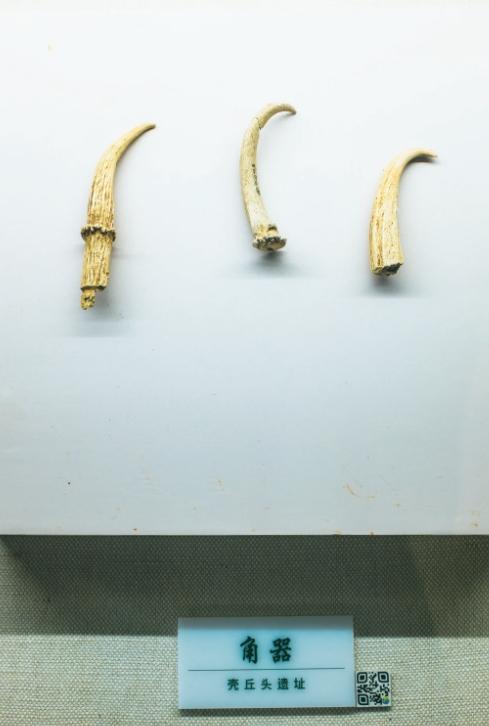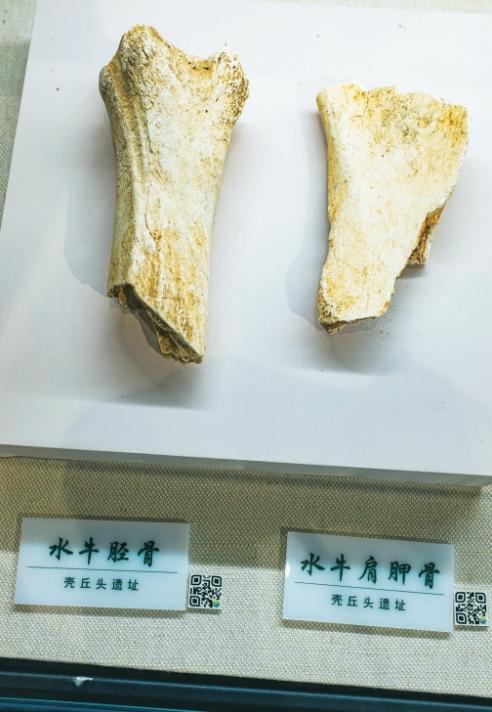Bone Artifacts: Reflecting ancestors' fishing and hunting life
en.ptnet.cn | Updated:2025-05-19 | Lin Kongbo, Stephanie
Boneware made of animal horns

Boneware made of buffalo bones
Name: Bone Awl, Bone Needle, Bone Chisel, Bone Knife, etc.
Excavation Site: Keqiutou site, Pingtan
Function: Practical tools
Era: Neolithic Period
Age: Approximately 6,500 years
Archaeological Findings:
Tools like awls, needles, chisels, and others commonly seen in life today were already "invented" by the Keqiutou ancestors thousands of years ago. "This pointed bone awl, about 8 centimeters long, was made by the Keqiutou ancestors using fragments of deer shinbones. At that time, people first cut the shinbone fragments into strips, then finely ground one end into a pointed shape and roughly polished the other end..." Hou Ronggui, deputy director of the Pingtan International Austronesian Research Institute said.
It is understood that the Pingtan Keqiutou Site is currently known as the earliest Neolithic cultural relic site along the coast of Fujian and is also a key subject related to the origin and spread of the Austronesian peoples. The site was excavated three times, in 1985, 2004, and 2021, revealing six types of bone tools, including bone awls, bone needles, bone chisels, bone knives, bone arrowheads, and bone-pointed implements; in terms of decorative items, there were bone hairpins and button-shaped ornaments.
Hou Ronggui stated that the unearthed prehistoric artifacts prove that the Keqiutou ancestors had already reached a certain level of production skills in making bone products. The diversified bone artifacts unearthed from the Keqiutou site indicate that the ancestors utilized hard yet resilient bone materials to make tools to compensate for the lack of high-quality stone materials. Compared to stone tools, bone tools had advantages in elasticity, lightness, and portability.
In addition, the ancestors of that time also understood how to carefully select different parts of mammalian bones according to their needs, using different methods to shape bone blanks and then further process and polish them into various tools. "This differentiation may be closely related to their understanding of the functions of bone tools, food needs, geographical environmental conditions, and resource supply levels. Although few decorative items were unearthed, they still indicate that while satisfying living needs, the Keqiutou ancestors also had a strong sense of aesthetics and a pursuit of art," Hou Ronggui said.
The manufacturing process of polished bone tools is far more complex than that of chipped stone tools. It requires several steps: material selection, splitting and smashing bone fragments, making blanks, shaping, rough grinding, fine grinding, and eventually even decorating and engraving the surface of the tools.
Hou Ronggui stated that from a batch of polished bone tools, such as finely pointed bone needles and obliquely ground-edged bone knives, it is evident that the craftsmanship of polished bone tools among the Keqiutou ancestors was already well-developed. This reflects their successful example of developing and utilizing natural resources, proving humanity's deep understanding and full utilization of animal bones during long-term survival struggles.
Many animal bones excavated from the Keqiutou site are displayed in Pingtan, including water buffalo tibias, scapulas, and the jawbones of wild boars and deer. "These animals can no longer be found on today's Pingtan Island. However, through these animal bones, we can glimpse the natural environment in which the Keqiutou ancestors lived 6,500 years ago. At that time, Pingtan had a rich natural environment where various animals could thrive," added Hou.
Additional Context:
Bone tools refer to implements made from processed animal bones, teeth, and horns. Bone tools were essential for early human life, serving purposes in hunting, fishing, grinding food indoors, and sewing clothes. In the Paleolithic Age, humans learned early on to use animal bones to craft simple pointed tools for digging, stabbing, and throwing. By the late Paleolithic Age, polishing techniques played a significant role in the development of human culture and tool innovation. The use of bone tools not only improved living conditions but also greatly enhanced food acquisition efficiency.
There is a wide variety of polished bone artifacts, commonly including bone needles, bone awls, bone shovels, bone knives, bone arrowheads, bone hairpins, and bone-pointed implements.

